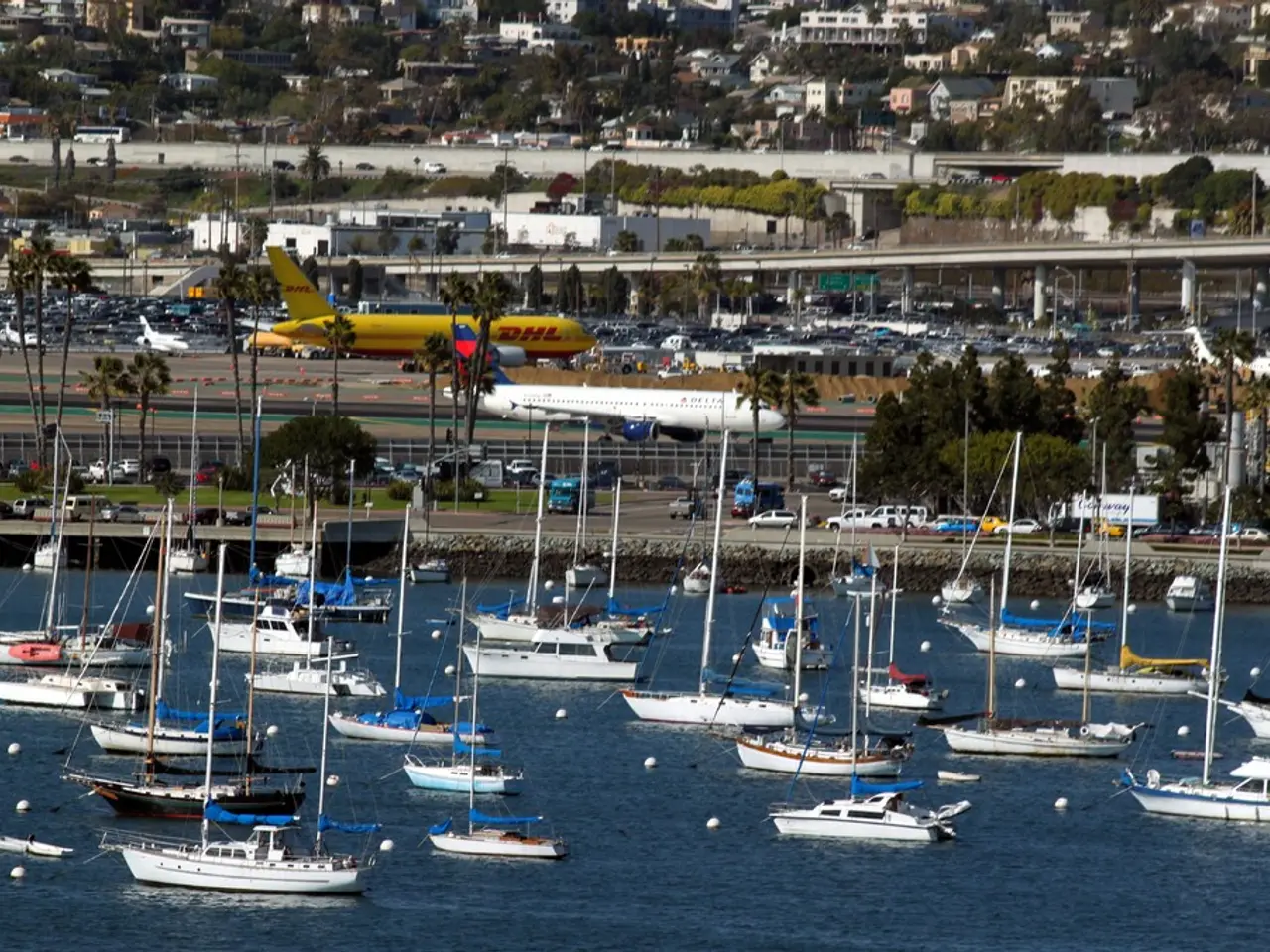Container Tracking and Sustainable Shipping: Cutting Carbon Emissions!
In an era where sustainability is paramount, the shipping industry is embracing technology to lower its carbon footprint and contribute to a greener planet. By integrating Internet of Things (IoT) devices and Artificial Intelligence (AI) analytics, shipping companies are making ecological shipping decisions that optimize operations and significantly reduce emissions.
Reducing Idle Time and Route Optimization
The integration of IoT devices and AI analytics is revolutionizing the shipping industry. Real-time monitoring and rerouting allow for efficient use of resources, minimizing idle times and fuel consumption. IoT devices track containers in real-time, monitoring their location and status. This data is analyzed by AI to identify potential delays or inefficiencies, and optimize routes and schedules accordingly. Predictive maintenance, another benefit of this integration, reduces downtime and comprehensive maintenance events that consume more energy.
Efficient Energy Use and Carbon-Aware Planning
AI is also playing a crucial role in carbon-aware decision making. By analyzing energy consumption patterns and the carbon intensity of logistics operations, AI can schedule container movements during times of cleaner energy availability, reducing reliance on high-carbon energy sources. Optimal resource allocation, such as refrigeration and lighting in warehouses and containers, is another area where IoT and AI are making a difference. By optimizing these resources, energy consumption and associated emissions are reduced.
Improved Supply Chain Visibility
Enhanced supply chain visibility is another key advantage of IoT and AI. Real-time visibility into supply chain operations enables quicker response to disruptions, and systems can rebalance inventory and adjust transport strategies to minimize unnecessary journeys and reduce fuel use. Predictive analytics also play a role in this, as AI can analyze historical and real-time data to predict potential bottlenecks or inefficiencies, allowing for proactive measures to be taken to avoid these issues and further reduce emissions.
A Greener Future for Shipping
The shipping industry is responsible for emitting approximately 1,000 million metric tons of carbon dioxide each year, accounting for about 3% of worldwide emissions. However, with the adoption of tracking technologies, shipping companies can identify nearby available containers, reducing unnecessary relocation and lowering CO2 emissions. The use of LNG biofuels and hydrogen powered ships, AI-Driven Load Optimization, and Energy-Efficient Warehousing are all steps towards a greener future for shipping.
Affordable, real-time container shipment tracking is a revolutionary advancement, helping lower carbon footprints and making maritime transport cleaner, greener, and more effective. The Global Maritime Group has warned that emissions could surge by 50% by 2050 without significant action. However, with the implementation of these technologies, shipping companies can take proactive steps to meet global sustainability goals, such as the push for at least a 50% reduction in shipping emissions by 2050.
The shipping industry's transition to a more sustainable future is not without its challenges. Large vessels create noise pollution that disturbs messages amongst marine species, particularly whales and dolphins. Ballast water discharge, oil spills, and waste dumping have contaminated oceans and threatened marine biodiversity. Smart Port Operations and automation of port logistics and crane processes are steps towards addressing these issues, enhancing efficiency and plummeting idle time and fuel costs.
In conclusion, the integration of IoT devices and AI analytics is transforming the shipping industry, making it more sustainable, efficient, and environmentally friendly. By optimizing route planning, energy use, resource allocation, and supply chain visibility, these technologies are helping shipping companies make more informed decisions, reduce emissions, and contribute to a greener planet.
Read also:
- California links 100,000 home storage batteries through its Virtual Power Plant program.
- Uncertainty Surrounds the Transition to Clean Energy: Public Ponders Implications and their Role in the Change
- Vietnamese AI Engineers Claim Victory in International Competition
- Mars' Nighttime Clouds Fully Visible in New Image Capture








